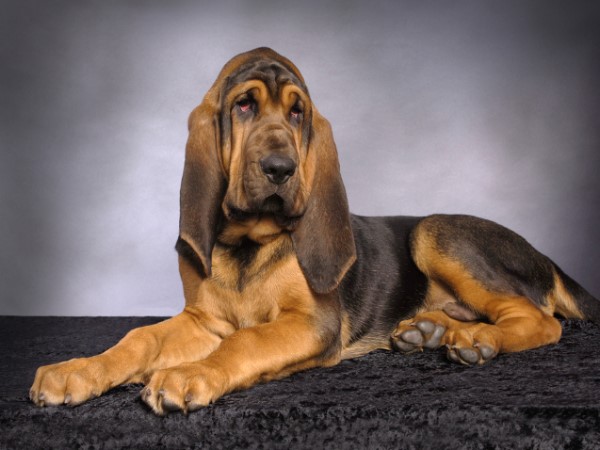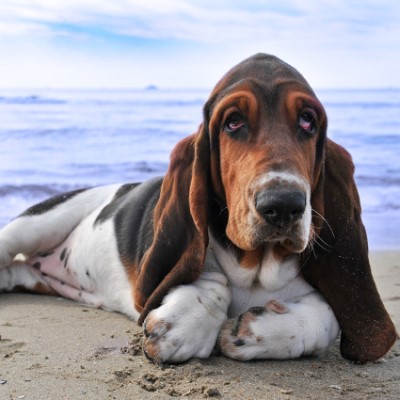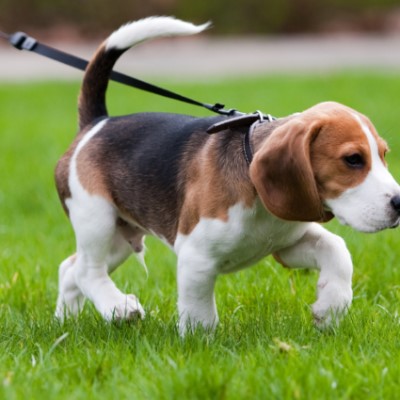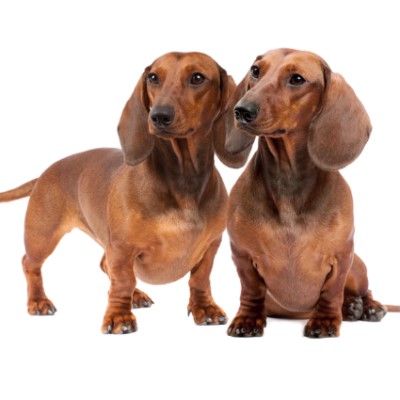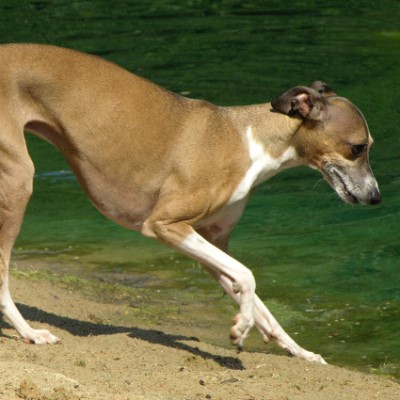Common Reasons for Surrender
Many adopters just don’t know what to expect when they bring a Bloodhound home. Bloodhounds, with their long droopy ears are cute and may be small when they are young, but they grow in leaps and bounds, some as big as 200 pounds. They track scents but they don’t hunt, so people who fail to do their research adopt them, thinking they’re getting a hunting dog.
Are you familiar with that image many people have of a lazy Bloodhound lying on the porch all day? Forget it. Bloodhounds have a lot of energy and are generally hyper their entire lives.
Pros
Bloodhounds typically love people but often don’t share the same affection for other dogs. These hounds are exceptional watchdogs and a sturdy breed with few health problems.
Cons
Bloodhounds love their food and become very food aggressive at mealtime, particularly with other dogs, so you must make sure your Bloodhound has space when he eats. If you want a quiet, lazy dog, you won’t find it with the hyper Bloodhound, even when he’s older. Bloodhounds are trackers and love to run after any other animal, including cats, that crosses their paths.
Diet
Bloodhounds become possessive around food, so you must keep an eye on your Bloodhound at mealtime. Never allow your Bloodhound to eat while his head is down; always ensure his head is up by putting his food dish on a stool or an elevated surface. Bloat, which means the dog’s intestines have flipped, is the leading cause of death in Bloodhounds and is often caused by a dog eating with his head down.
Feed your Bloodhound a good dry food, such as Purina One, but avoid using Science Diet, which typically gives Bloodhounds terrible bouts of diarrhea.
You may also want to give your Bloodhound vegetables—anything but onions—to supplement his meals or as a treat.
Exercise
Whereas some breeds grow slower with age, Bloodhounds are energetic from the time they are born until they die. That means your Bloodhound is going to need plenty of room to run. Your Bloodhound will need a minimum of several hours a day to run.
Possible Health Problems
The Bloodhounds’ long, droopy ears, which often drag on the ground, make them prone to yeast infections of the ear. They are also susceptible to eye infections.
Grooming
Expect ease when it comes to grooming your Bloodhound. Bathe him occasionally and keep his ears dry to avoid a yeast infection. Prop up your Bloodhound’s water bowl to avoid his ears dropping in while he’s drinking.
Bloodhounds shed twice a year, typically in the spring and fall. To stop the shedding, pluck out your dog’s undercoat once a year. To pluck, just grab a small patch of hair and pull it. Don’t worry about hurting your Bloodhound: Plucking your dog is akin to pulling a feather out of a bird, and it doesn’t hurt. In fact, most dogs love being plucked.
Training
Get ready for a challenge when it comes time to train your Bloodhound. Known for being headstrong and stubborn, you will find that a Bloodhound does what he wants to do. If he doesn’t want to do something, he’s not going to do it. On the other hand, you can teach your Bloodhound to track with very little difficulty.
Entertainment
If you do not give your Bloodhound enough exercise and/or room to run, expect destruction. Bloodhounds, especially young ones, need the opportunity to run, whether it’s in a roomy backyard or at the dog park. As they grow older, their need for exercise varies from one dog to another. Some are happy just walking out the door to relieve themselves while others want plenty of space to roam and run.
We want to thank East Tennessee Bloodhound Rescue for help with this profile.
